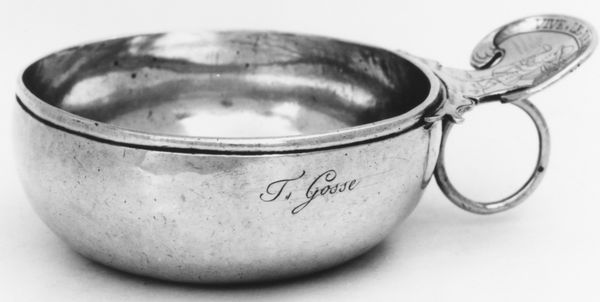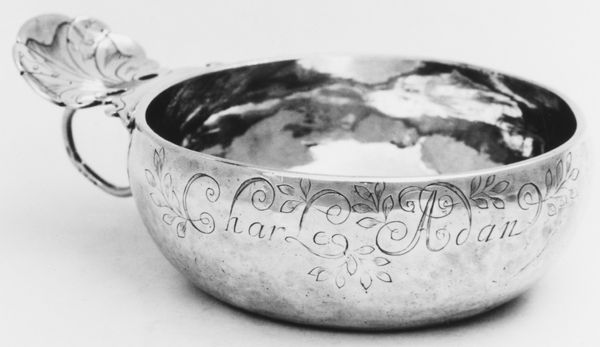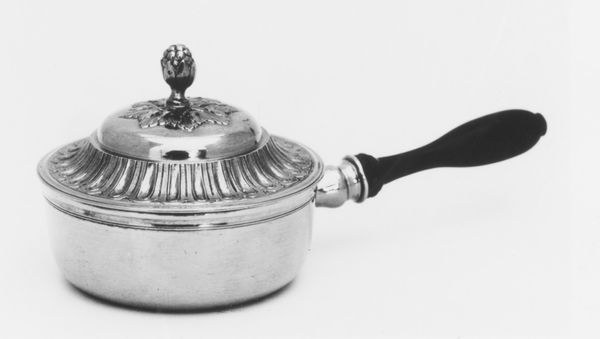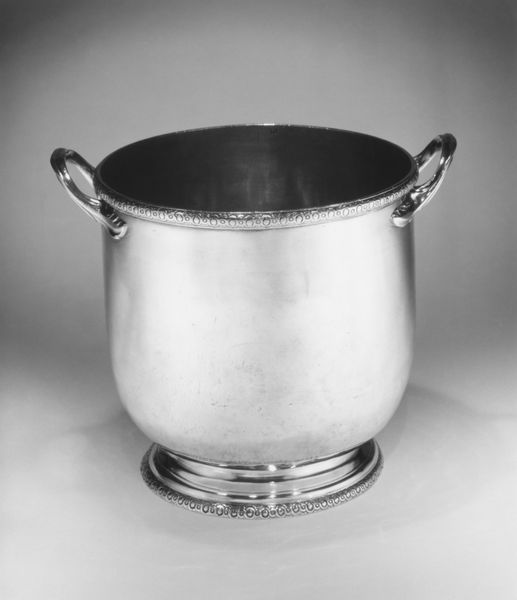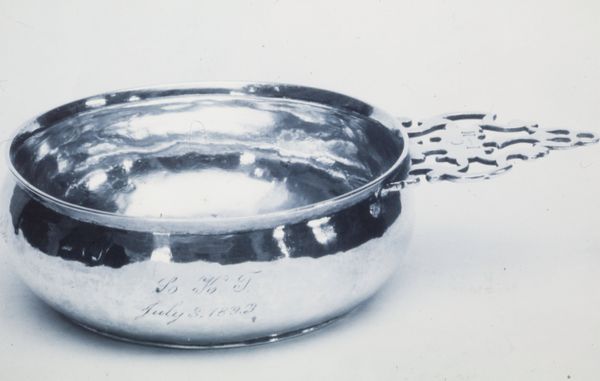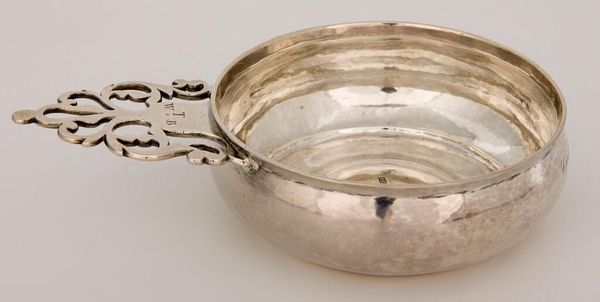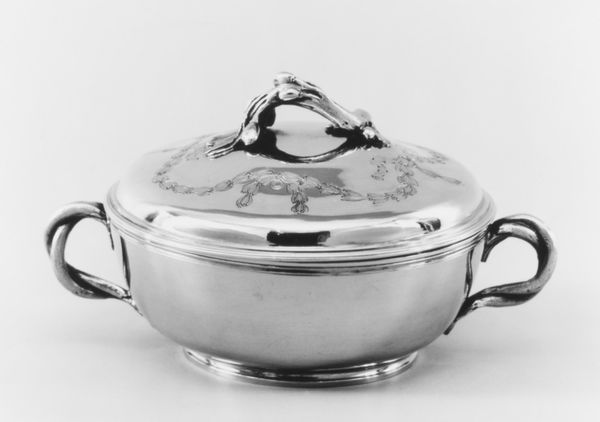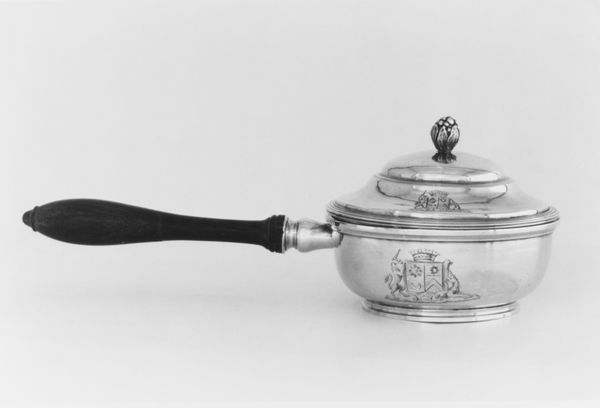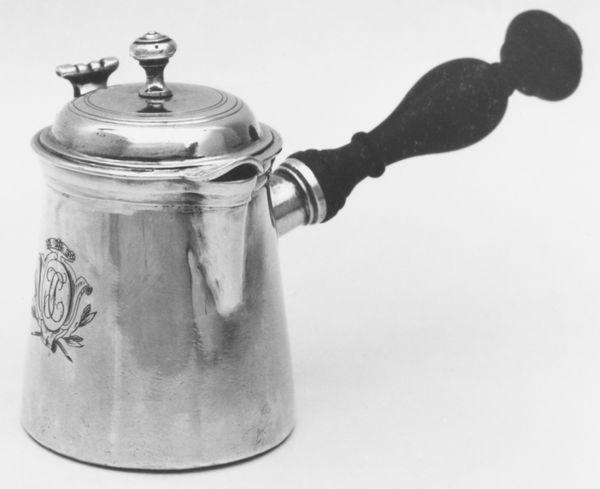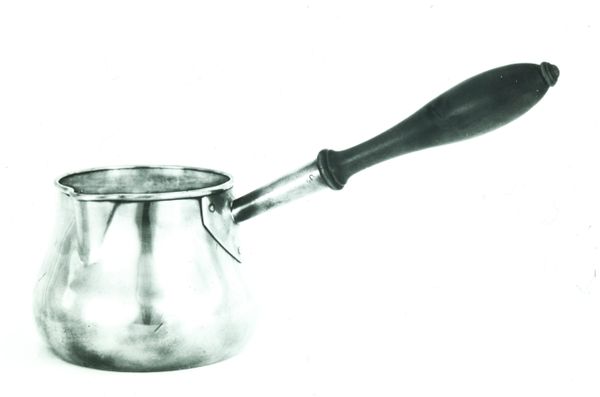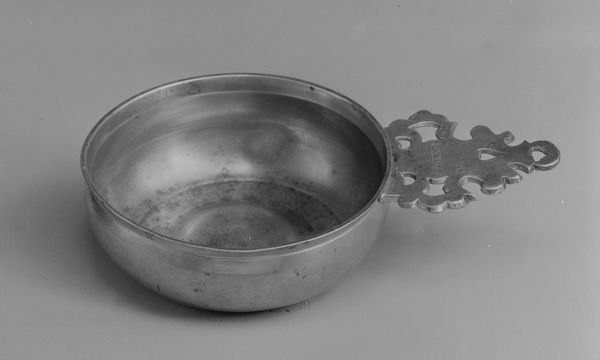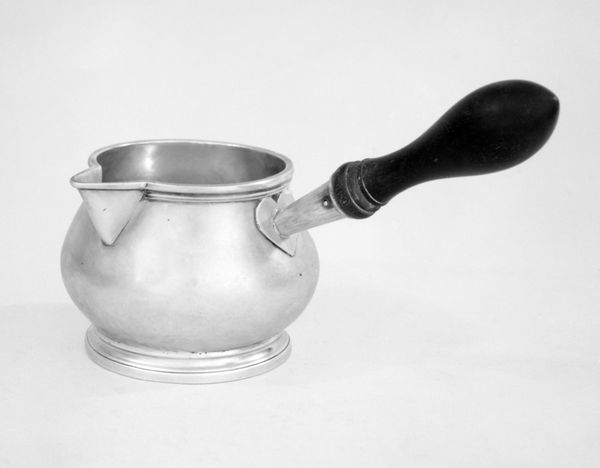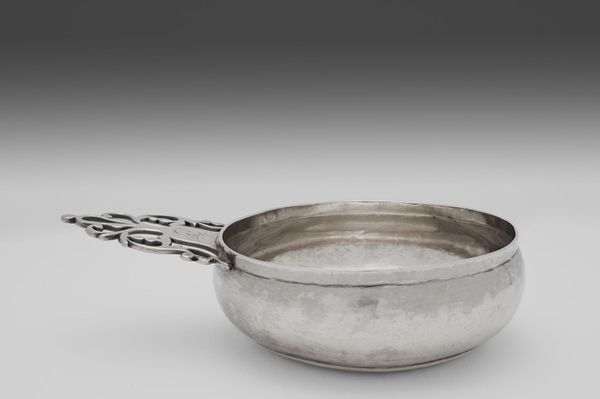
silver, metalwork-silver, sculpture
#
silver
#
wedding photograph
#
swirl
#
ring
#
culinary art
#
appetizing
#
comfort food
#
metalwork-silver
#
stoneware
#
wash background
#
sculpture
#
food photography
#
recipe
#
decorative-art
Dimensions: Overall: 1 3/4 × 3 1/2 in. (4.4 × 8.9 cm)
Copyright: Public Domain
Editor: Here we have a Wine Taster crafted from silver by Charles Lagenet, sometime between 1733 and 1743. It’s relatively small and seems quite utilitarian. I wonder about its story. What do you see in this piece, considering its cultural context? Curator: I see far more than just a simple drinking vessel. Consider the symbolic weight of silver itself – often associated with purity, clarity, and even wealth. In the 18th century, such an object wouldn’t merely be functional; it would declare something about the owner's status and taste. The very act of tasting wine becomes elevated, almost ceremonial. Note the handle, not just a simple grip, but ornate, echoing established traditions. It is interesting how it is shaped almost like an egg or chalice, referencing perhaps fertility or rituals from earlier, pre-Christian times. How do you read the inscription, if at all? Editor: I hadn't considered those angles! The inscription, "Jean Ternon," I assume that’s the original owner's name. The family obviously wanted to emphasize that they wanted a cup that reflects on the family. It’s a symbol, like an old family crest. It tells others the cultural heritage to which the owner belongs, even if their line is fading with the oncoming winds of modern history. Curator: Precisely! It’s an echo of lineage and perhaps aspiration. Such an object would be a tangible link to their identity. We can consider the importance of symbolism on its presence in domestic rituals around meals, as well as being exhibited for acquaintances. It is very much intertwined with that time in Europe. A conversation piece and more! Do you see any hints to their profession within it? Editor: It does hint at that, definitely the higher end. Silver isn't exactly a pauper's metal of choice. That ornamentation probably meant even more than its pure functionality as well. You gave me lots to reflect on, this little cup tells an important cultural story of status in that part of Europe, doesn't it? Curator: Indeed. This "Wine Taster" becomes a vessel not just for wine, but for memory, status, and identity – quite an eloquent object, all in all.
Comments
No comments
Be the first to comment and join the conversation on the ultimate creative platform.
